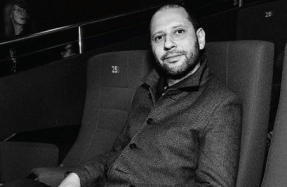WHERE EAGLES DARE



IN 1898, AT OLD MADISON SQUARE GARDEN, NIKOLA TESLA demonstrated one of the defining innovations of contemporary civilization. He steered a small boat by remote radio control. His patent was ambitiously entitled “Method of and Apparatus for Controlling Mechanism of Moving Vehicle or Vehicles,” and indeed the technological principle would quickly come to find applications in everything from radio and TV clickers to military aircraft. Remote operation allowed users to manipulate machines from a distance, limiting travel, conserving energy, creating a new manner of robotic movement, and qualitatively dissociating labor by placing an intermediary between intended action and physical outcome. More than a century after Tesla’s patent, the principle remains—as does its moral, experiential, economic, and aesthetic implications.
While the employment of remote-controlled drones for military and surveillance purposes has received a fair amount of scrutiny during this century, less has been written about their use in film, other than to offer a “hey, cool, look what we can do, hooray technology” chest-bump. Though they’ve been available in one form or another since the 1980s, it’s been less than a decade since unmanned aerial vehicles (UAVs), better known as drones, became commercially accessible and affordable to a wider community of filmmakers. And quite simply, they’ve been a budgetary godsend, especially for independent makers. What used to require a helicopter, crane, or track—along with the skilled crew to maneuver them—can now be approximated by a drone and its operator. Not only are these shots more economical, they’re finally available for projects where they previously weren’t.
In just a few years’ time, they’ve become both requisite filmmaking tools and regrettable freighters of cliché. Drone shots are easily recognizable not because drone cameras have a single, easily definable use, but because nearly everyone’s using them the same way: god’s-eye view of a landscape, smooth gliding (heaven forbid there’s a jerk or rattle), low-grade wow factor, cut. Whatever meaning or information these drone shots are meant to convey, they mostly just convey that they’re
You’re reading a preview, subscribe to read more.
Start your free 30 days



